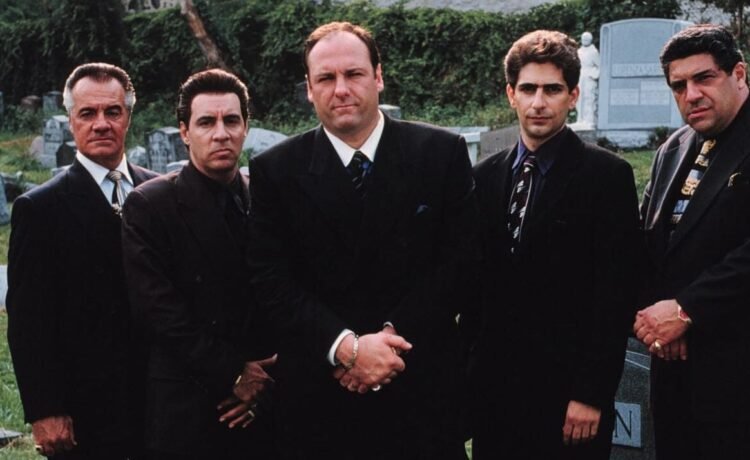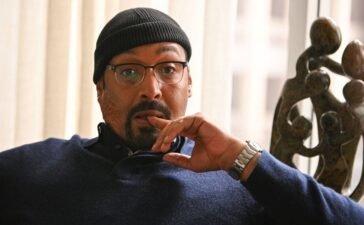The Sopranos is a TV landmark, celebrated for its mix of psychological depth, dark humor, and gritty mob drama.
But behind the groundbreaking storytelling lies a patchwork of real-life inspirations that shaped its world, from North Jersey’s notorious mobsters to the eerie legends of the Pine Barrens.
While the DeCavalcante Family is often cited as the primary influence for Tony Soprano and his crew, digging deeper reveals a more complex picture.


Richie “The Boot” Boiardo, one of Newark’s most powerful mob bosses, and his son Tony Boy, offer even closer parallels to Tony’s story.
Add in New Jersey’s rich mob lore and peculiar history — like the Pine Barrens’ rumored mob dumping grounds — and you start to see how reality seeped into the fictional world of The Sopranos.
Let’s explore how real-life characters, places, and stories helped shape the saga of Tony Soprano.
Richie “The Boot”: The Real King of North Jersey
Long before Tony Soprano ruled North Jersey in fiction, Richie “The Boot” Boiardo ran things in real life.
As one of Newark’s most powerful mob bosses during the mid-20th century, Boiardo’s name struck fear into even the most hardened gangsters.


Known for his ruthlessness and influence, Boiardo’s name could strike fear into even the most hardened gangsters.
His reputation wasn’t just built on his wealth or criminal empire; his ruthlessness and penchant for theatrics cemented it.
Boiardo’s mansion in Livingston, New Jersey, wasn’t just a symbol of his power — it was a macabre spectacle.
The estate featured a gated driveway lined with ceramic busts of his family members, a full-sized statue of himself atop a horse, and sprawling grounds that included a rumored body-burning pit hidden in the woods.
The pit, where victims were tortured and disposed of, became a chilling emblem of his brutality.
Mobsters were reportedly so terrified of Boiardo that they avoided visiting his home alone, with some even refusing invitations outright.


David Chase, who grew up near the Boiardo estate, likely couldn’t ignore the eccentricities that defined Richie “The Boot” Boiardo’s larger-than-life persona.
The infamous scene in The Sopranos where Tony sits on a horse in his living room during the dream sequence from The Sopranos Season 5 Episode 11 “The Test Dream” echoes Boiardo’s grandiose displays.
This surreal moment aligns more with Boiardo’s larger-than-life persona than the oft-cited photograph of Colombo Family boss Joe Colombo on horseback.
While Colombo’s image is grounded in reality, Tony’s surreal horseback moment, set within the confines of his home, carries a mythic, almost grotesque grandeur — much like Boiardo’s opulent and imposing estate.
Boiardo’s blend of showmanship and savagery is reflected in Tony’s character — someone who could charm and terrify in equal measure, embodying the duality of power in the mob world.


Even within mob circles, Richie “The Boot” stood out.
His penchant for violence was legendary, with stories of him using hammers and crowbars to dispatch enemies circulating as cautionary tales.
As the leader of his own powerful crew under the Genovese Family flag, he was not just a gangster — he was a force of nature.
Richie Boiardo’s son, Anthony “Tony Boy” Boiardo, adds another layer to the story.
Like Tony Soprano, Tony Boy inherited his father’s empire, but their relationship wasn’t exactly warm and fuzzy.
Richie’s domineering presence reportedly loomed large over his son, creating tension that echoes Tony’s dynamic with his own family in the series.


Tony Boy’s challenges in navigating his father’s shadow parallel Tony Soprano’s struggles with his own legacy.
Whether it’s Tony grappling with his role as head of the family or his fraught relationship with his son A.J., the generational conflict that The Sopranos captures feels deeply rooted in the Boiardo family’s history.
The DeCavalcante Debate
No discussion of The Sopranos’ real-life inspirations would be complete without mentioning the DeCavalcante family.
Often called the “real Sopranos,” the DeCavalcantes operated out of Elizabeth, New Jersey, and their structure and turf wars certainly bear some resemblance to Tony’s crew.


Vinny “Vinny Ocean” Palermo, a DeCavalcante capo who later turned government witness, is often cited as a model for Tony.
But focusing solely on the DeCavalcantes feels reductive. While they undoubtedly influenced the show, Chase’s storytelling draws from a broader tapestry of mob history.
The Boiardos’ larger-than-life personalities, Richie’s mansion, and their complicated father-son dynamic likely left a deeper mark on Chase, who has admitted to being fascinated by North Jersey’s mob lore growing up.
Pine Barrens: TV’s Strangest Mob Episode
When fans discuss the show, The Sopranos Season 3 Episode 11, “Pine Barren” always comes up.
Written by Terence Winter and directed by Steve Buscemi, the episode sees Paulie and Christopher bumble their way through the frozen wilderness after botching a hit on a Russian mobster.


It’s darkly comedic, endlessly quotable, and a perfect encapsulation of the show’s absurdity.
But the Pine Barrens themselves have a history that’s just as strange as anything on TV.
This sprawling forest in southern New Jersey is home to countless urban legends, from ghost sightings to the infamous Jersey Devil.
During Prohibition, it was rumored to be a hotspot for moonshiners, bootleggers, and mobsters.
Some even claim it was a dumping ground for bodies — though finding anything in the vast wilderness would be nearly impossible.
The episode captures the eerie desolation of the Pine Barrens but stops short of connecting it to its mob history.


For a show so rooted in blending reality with fiction, this feels like a missed opportunity.
Imagine if the Russian had stumbled across a plane wreckage or an old bootlegging shack — something that tied the area’s lore into the story.
Still, the episode remains a fan favorite and a testament to the weirdness that defines The Sopranos.
Inspiring The Sopranos
Richie Boiardo’s story isn’t just mob history but also part of American history.
His rise to power, his eccentric personality, and his complicated family dynamics all reflect broader themes of ambition, loyalty, and corruption.


While the DeCavalcante family gets much of the credit for inspiring The Sopranos, Boiardo’s influence looms just as large, if not larger.
David Chase’s genius lies in his ability to weave together multiple threads of reality into a rich, fictional tapestry.
By blending the Boiardos’ drama, the DeCavalcantes’ operations, and New Jersey’s peculiar history, Chase created a world that felt both authentic and larger than life.
The Sopranos isn’t just a mob show — it’s a mosaic of stories, influences, and real-life figures.
From Richie “The Boot” Boiardo’s eccentric mansion to the desolation of the Pine Barrens, the show captured the strange, dark, and often absurd world of North Jersey’s underworld (and there’s a lot of rich and interesting mob history there.)
While fans will continue to debate the true inspirations behind Tony Soprano, one thing is clear: reality is often just as fascinating as fiction.
And in the world of The Sopranos, the line between the two is as thin as a Jersey accent.
What do you think? Was Richie “The Boot” Boiardo the true inspiration for Tony Soprano, or do you think the DeCavalcante family deserves more credit?
And what’s your favorite bit of real-life lore that made its way into The Sopranos? Let’s discuss the fascinating overlap between mob history and TV’s greatest drama.
Watch The Sopranos Online







